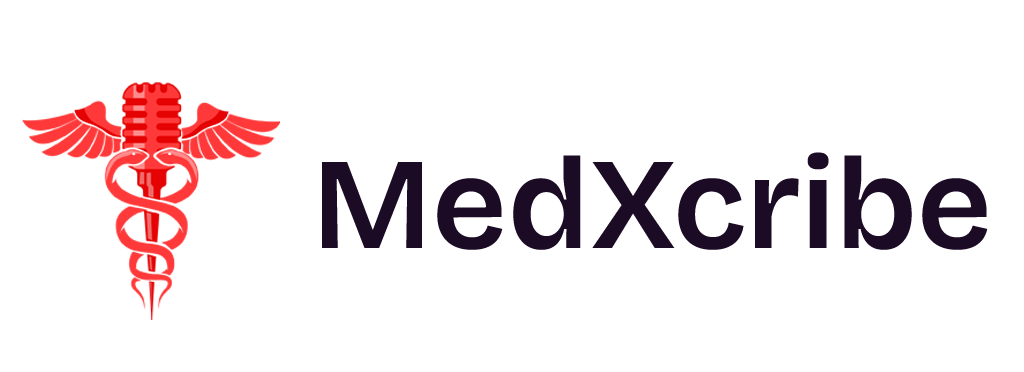How to Become a Successful Medical Transcriptionist: The Ultimate Guide

Medical transcriptionists play a vital role in healthcare, ensuring accurate and efficient documentation that supports patient care. With advancements in technology, especially the integration of AI , the field is evolving rapidly. If you’re looking to start or advance your career in medical transcription, this guide will provide insights into essential skills, training opportunities, and job prospects. https://youtu.be/eFNPptXJwrc 1. Education Qualifications to Become a Medical Transcriptionist High School Diploma or Equivalent A high school diploma is the minimum educational requirement. Strong skills in Languages, grammar, and typing are essential. Post-Secondary Training (Optional but Recommended) Enroll in a Medical Transcription Training Program from community colleges, online platforms, or vocational schools. These programs cover: Medical terminology Anatomy and physiology Grammar and editing skills Transcription software usage Certification (Optional but Beneficial) Certification can boost your career prospects and credibility. Common certifications include: RHDS (Registered Healthcare Documentation Specialist): For entry-level transcriptionists. CHDS (Certified Healthcare Documentation Specialist): For experienced professionals. Offered by the Association for Healthcare Documentation Integrity (AHDI). Knowledge of Medical Terminology and Technology Develop familiarity with medical terms, transcription tools, and compliance standards like HIPAA. Some programs integrate these into their training. On-the-Job Training Many transcriptionists gain additional skills and refine their expertise through hands-on experience in clinics, hospitals, or transcription companies. While formal education isn’t always mandatory, completing a specialized program and earning certifications can significantly improve your employability and earning potential in this field. 2. Essential Skills for Medical Transcriptionists To thrive in medical transcription, you need a unique combination of technical expertise, attention to detail, and adaptability. Here are the critical skills required: Typing Proficiency and Accuracy (Must Have) Typing Speed: Aim for 60-75 words per minute or more. Accuracy: Minimize errors, as even small mistakes can have serious consequences in patient care. Knowledge of Medical Terminology (Must Have) Understand medical terms, abbreviations, anatomy, and pharmacology. Use medical dictionaries and references to verify terms when necessary. Excellent Listening Skills (Must Have) Accurately interpret audio recordings, even with background noise or heavy accents. Understand nuanced medical terms and instructions. Attention to Detail (Must Have) Ensure all documentation is accurate, from patient records to billing codes. Double-check all work to eliminate errors. Confidentiality and Ethics (Must Have) Follow HIPAA guidelines and maintain strict patient confidentiality. Handle sensitive medical information responsibly. Strong Grammar and Writing Skills (Highly Recommended) Write clear and concise reports that are grammatically correct. Prioritize clarity by avoiding long and complex sentences. Adaptability and Trainability (Highly Recommended) Quickly learn new software and office protocols. Stay updated with changes in the healthcare and transcription industries. Technological Proficiency (Recommended) Use transcription software, voice recognition tools, and foot pedals. Stay comfortable with platforms like ScribeMD.ai and other AI-powered transcription tools. Multitasking Ability (Optional but Beneficial) Listen to dictations while typing and inputting data simultaneously. Juggle multiple tasks efficiently without sacrificing quality. Commitment to Lifelong Learning (Optional but Beneficial) Stay updated with medical advancements and new technologies. Pursue certifications like RHDS (Registered Healthcare Documentation Specialist) or CHDS (Certified Healthcare Documentation Specialist). 3. Where to Learn Medical Transcription Online There are many platforms offering training programs in medical transcription. Here’s a comparison: Platform Description Key Benefit Approx. Cost Duration Level Website Alison Free courses on medical transcription with optional paid certifications. Cost-effective for learners on a budget. Free, ~$30 for certificates 1-3 hours Beginner Alison Udemy Affordable courses on medical transcription with lifetime access. Cost-effective with a wide range of courses. ~$15-$50 (on sale) 2-10 hours Beginner-Intermediate Udemy LinkedIn Learning Courses on medical transcription basics and medical terminology. Certifications displayable on LinkedIn profiles. ~$29.99/month 1-5 hours Beginner LinkedIn Learning Ashworth College Comprehensive career diploma program covering terminology and transcription. Affordable tuition with payment plans. ~$800-$1,200 4-12 months Beginner Ashworth College 360training Specialized in transcription training, including HIPAA compliance. Includes job placement assistance. ~$1,500-$2,000 Self-paced Beginner-Intermediate 360training Coursera Courses in medical transcription and healthcare documentation from reputed institutions. Flexible scheduling and high-quality content. Free to audit, ~$49/month 4-12 weeks Beginner-Intermediate Coursera CareerStep Hands-on transcription and editing training program. Industry-recognized certification and job placement support. ~$2,999 4-6 months Beginner-Advanced CareerStep AHDI Official association offering certifications and resources for transcriptionists. Industry-standard certifications like RHDS and CHDS. ~$125-$300 for exams Self-paced Advanced AHDI Notes: Alison: Best for beginners; free or low-cost courses to explore transcription basics. LinkedIn Learning: Beginner-friendly with short, affordable courses and LinkedIn certifications. Udemy: Budget-friendly and beginner-focused, offering a range of quick and practical courses. Ashworth College: Comprehensive and affordable diploma program tailored for beginners. 360training: Offers intermediate-level training with HIPAA compliance and job placement assistance. Coursera: Flexible and high-quality courses from reputed institutions, suitable for beginners to intermediate learners. CareerStep: Advanced training with hands-on experience, industry certifications, and job placement support. AHDI: Advanced-level certifications (RHDS, CHDS) with global recognition and a focus on setting industry standards. 4. Job Opportunities for Medical Transcriptionists There are diverse career opportunities for medical transcriptionists across industries. Below is an overview: Category Potential Employers/Platforms Job Roles/Opportunities Scope Estimated Salary Packages Remote/Work-from-Home Jobs Freelancing Websites: Upwork, Freelancer, Fiverr Remote Job Boards: FlexJobs, Remote.co Freelance transcription services and remote job opportunities. Ideal for flexible schedules; opportunities to build a diverse client base. $15–$30/hour Freelance/Independent Work Independent physicians, small clinics, private healthcare professionals Start your own transcription business or work as a freelancer. Unlimited earning potential based on skill, specialization, and client base. $20–$50/hour (variable income) Transcription Service Providers ScribeAmerica, Nuance, M*Modal, iMedX Remote or part-time transcription jobs. Steady demand for outsourcing transcription to handle large workloads for multiple clients. $20–$25/hour Educational Institutions Medical schools, training institutions Transcribe lectures, training materials, and research notes. Niche opportunities to assist academic institutions with high documentation needs. $35,000–$50,000/year Healthcare Facilities Hospitals, Clinics, Private Practices, Specialty Practices Transcribe physician notes, diagnostic reports, and operative procedures. High demand for accurate documentation in patient care and compliance. $30,000–$45,000/year (entry-level), up to $60,000/year (experienced) Legal and Insurance Companies Legal firms, insurance companies Transcribe medico-legal documents and assist with medical claims. Growing demand for transcriptionists familiar with both medical and legal terminology. $35,000–$60,000/year Government and Public Health Organizations Government
